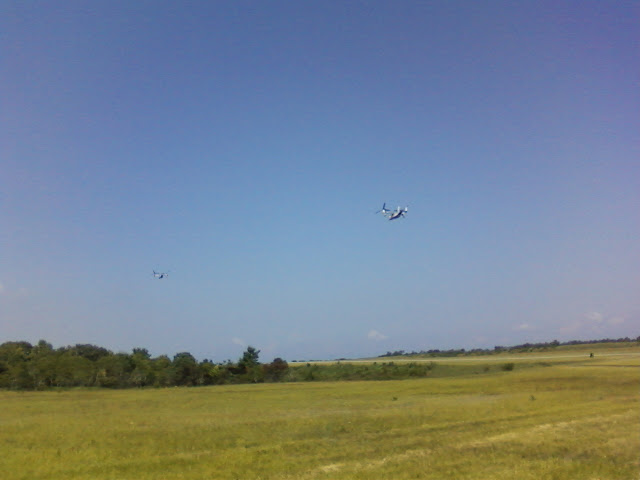I decided to take my son on a little excursion to Hot Springs for some hiking. The airport is on top of a mountain. I have passed by the airport quite a few times and thought it would be fun to explore the nearby landscape.
The flight there and back was routine. I flew VFR both directions. I still kept the GPS programmed with the plan and flew direct, making the navigation easy. I decided to take the time to refine some of the skills that I have not been especially good at using since the introduction of the GPS after obtaining by Instrument certification. Specifically, using VORs to track my progress and add to situational awareness along with VFR skills of following the sectional. As a coincidence, the following post from the Pilot Workshops came the same: http://www.pilotworkshop.com/tips/pilot_backup_navigation.htm.
Here are some simple things to do.
- Use the GPS to find the nearest or next VOR along the route the plane is tracking, punch it into the NAV frequency to always have the frequency ready if GPS goes down.
- Always IDENT the VOR. Keep this practice. If flying a GPS approach in lieu of a localizer or VOR, then have the VOR or Localizer frequency in Nav radio and idented, even if not used for navigation.
- Keep the sectional ready and open to the segment of flight. This does not mean that one should follow it closely as some pilots suggest. The GPS can still serve this function. However, keeping the page open and the fold of the page on available to viewable for the region the plane is tracking removes the struggle. I have not been doing this. I do have the chart handy and I track with my IPad. The digital approach is nice since it reduces the workload, provides a nice backup, and permits easy flipping between section and IFR enroute charts.
- I spent some time looking up some of the FSS frequencies in the area. There were some TS in the vicinity of the areas of flying. I did not come close to any. My flight conditions were VFR. However, I wanted to have the FSS frequencies with me if I needed to file IFR if the cloud front were to move in front of me.
- I did get call Flight Watch enroute to make sure I was not running into a small pocket of storms.
These are all simple things. However, I do not believe in idle time flying. There is always something that can be done to keep one two or three steps ahead. Practicing these actions increases the comfort and efficiency of the techniques, working them into a routine. My late instructor, John Crouse, never let me have an idle moment. He wanted me to always be looking at what is next on the list to do (radios, review of approach charts, mixture adjustments, performance and fuel checks, time checks, etc. and any thing else that can keep me ahead.
Hot Springs (Engalls) is a nice little airport on top of a mountain. The runway is sufficiently long. Landing distance on this particular day was not an issue. I chose HSP since it is supposed to have some hiking trails off the airport. The trails are there, but they are short and barely interesting. Still, my son and I made the best of the situation. We went looking for bears and rattle snakes that frequent the airport. We climbed up an very old water tower. We then rummaged through an old house (aka trespassing) looking for anything really old. We did not find anything. The house was filled with taxi way lights. Not interesting or old. The taxi lights are big green bodies with blue plastic hoods.
We did have one special treat. A couple of Osprey on a training mission landed on the runway while we were hanging around the field. The approach of the Osprey was interesting. They approached the airport side by side. Then one slid behind the other to land nearly simultaneously.



No comments:
Post a Comment